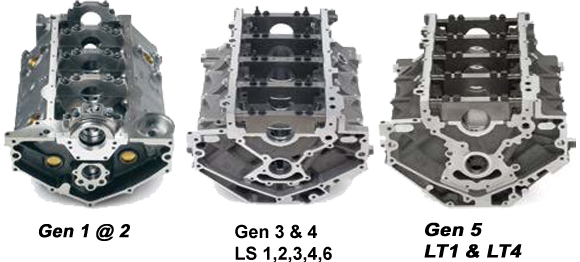TECH SPOTLIGHT: LS AND LT CYLINDER BLOCK DESIGN
One of the biggest design differences between the original Gen I/Gen II Small-Block and the Gen III/Gen IV "LS" engines and the recently introduced Gen V "LT" Small-Block is the long-skirt block casting of the LS and LT versions.
Also known as a Y-block design, because of the profile it creates, it’s defined by the casting’s extension below the centerline of the crankshaft. The primary reasons for it are strength and rigidity. By extending the block below that dimension, the crankshaft’s location is secured further with crossbolted main bearing caps. The Gen I/Gen II Small Block main caps are located with two or four vertical fasteners. With the LS and LT blocks, there are four conventional vertical fasteners, along with two additional horizontally located cross bolts.
Additionally, the long-skirt design adds rigidity to the block – particularly with the cross-bolted main caps – that contributes to smoother overall performance. Evolution of the basic LS/LT block has improved the bay-to-bay breathing capability between the sections of the block separated by the main caps, meaning there’s less power-robbing windage in the latest versions, which optimizes performance in blocks design to support great power capability with strength and refinement
This same design is incorporated into the GEN IV-style LSX iron block from Chevrolet Performance. This rugged design also incorporates a 6-bolt cylinder head to apply additional clamp load for nitrous, turbo-charged and supercharged applications. The Ultimate LS block!
